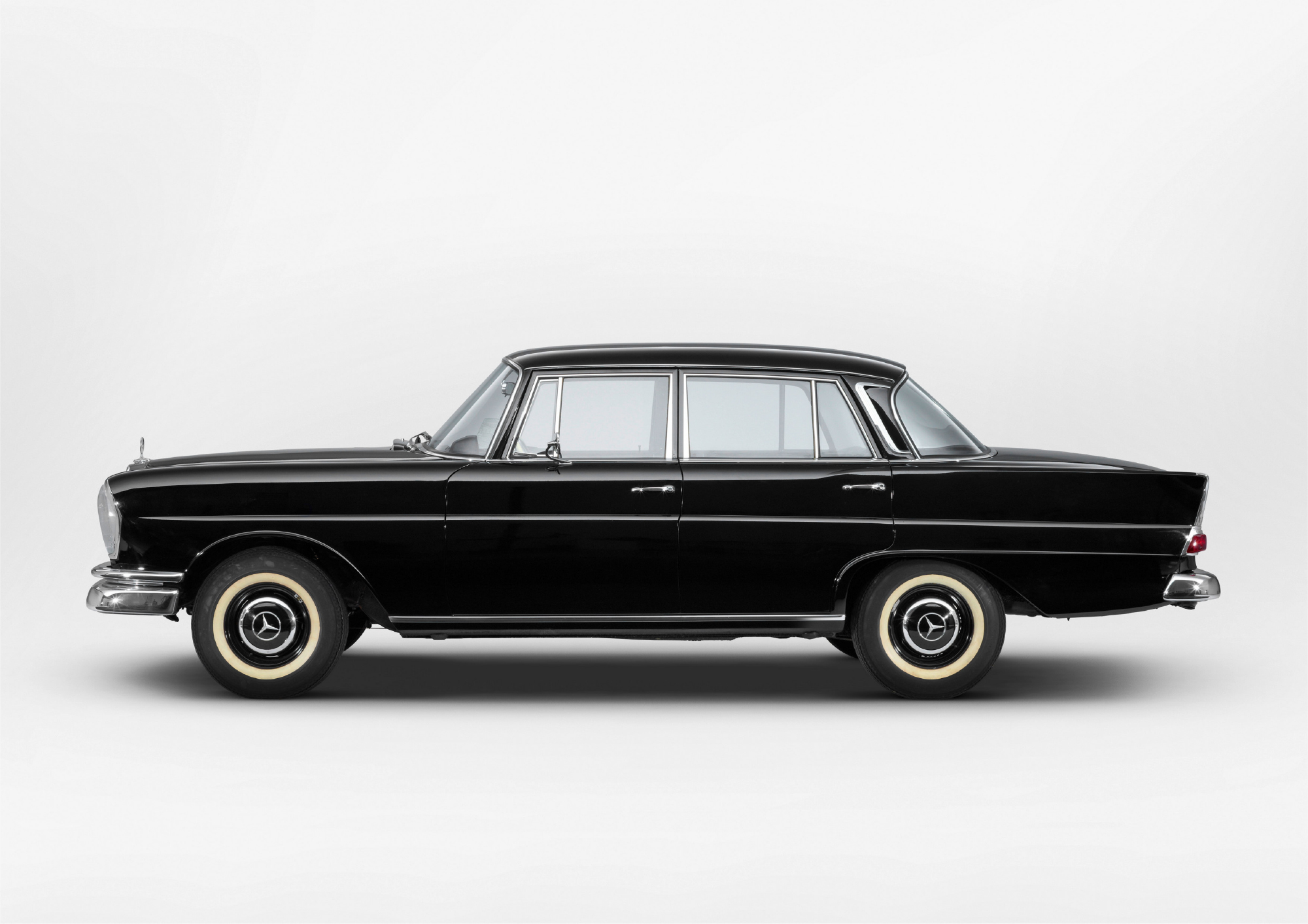In the 1960s, it was the top-of-the-range automobile “Made in Germany” bad-after-all: the “big fin” from Mercedes-Benz, factually correctly called the W111 series. Form-language elegance, six-cylinder culture and travel comfort offered the Mercedes tail fin 220 SE par excellence. The Mercedes-Benz W 111 was a model of the tail fin series of Mercedes-Benz, among enthusiasts also called “large (tail) fin”, in distinction to the series W 110 (so-called “small tail fin”). The W 111 replaced the large pontoon models of the W 180 series in 1959 and provided the technical basis for Mercedes models until the end of the 1960s.
In the 1960s, it was the top-of-the-range automobile “Made in Germany” bad-after-all: the “big fin” from Mercedes-Benz, factually correctly called the W111 series. Form-language elegance, six-cylinder culture and travel comfort offered the Mercedes tail fin 220 SE par excellence. The Mercedes-Benz W 111 was a model of the tail fin series of Mercedes-Benz, among enthusiasts also called “large (tail) fin”, in distinction to the series W 110 (so-called “small tail fin”). The W 111 replaced the large pontoon models of the W 180 series in 1959 and provided the technical basis for Mercedes models until the end of the 1960s.
The tail fins, which were moderate compared to U.S. vehicles of the time, were called “Peilstege” by the manufacturer and, according to Mercedes, were considered a parking aid that marked the end of the car. The W 111 succeeded the large “pontoon” W 105 and W 180 series built until 1959. Its straightforward, elegant body shape was the brainchild of then MB chief designer Karl Wilfert and his team. The body was characterized by a level of passive safety that had not been seen before: It was the first to have a stable passenger cell and effective crumple zones. Mercedes carried out extensive crash tests, e.g. they made a vehicle roll over at 80 km/h over a ramp.
The last 220 b sedan left the factory in the summer of 1965 as number 69,691. Only the 230 S continued to roll off the assembly line until 1968. Its successor was the W 108, which was built from 1965.



